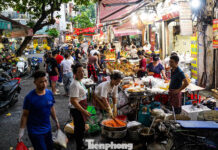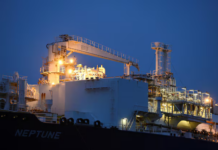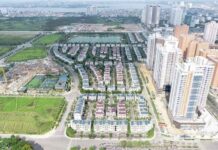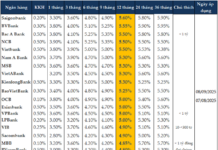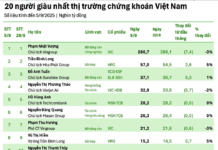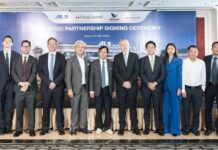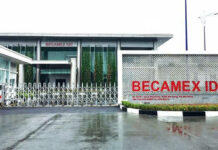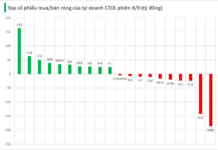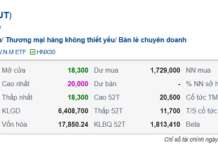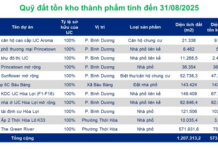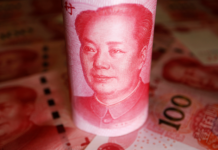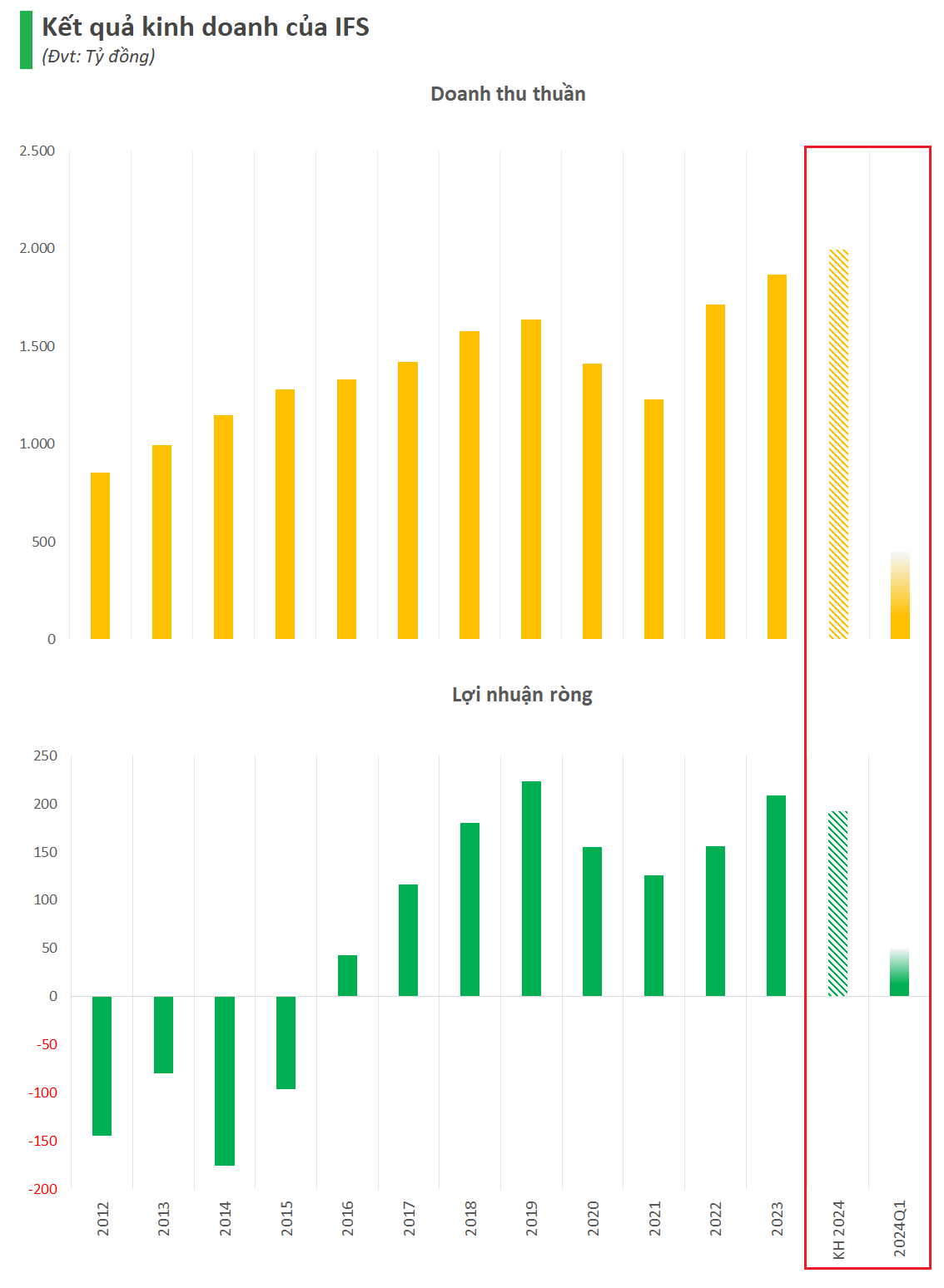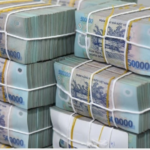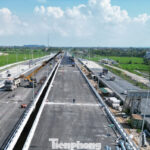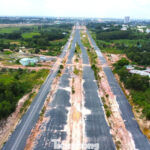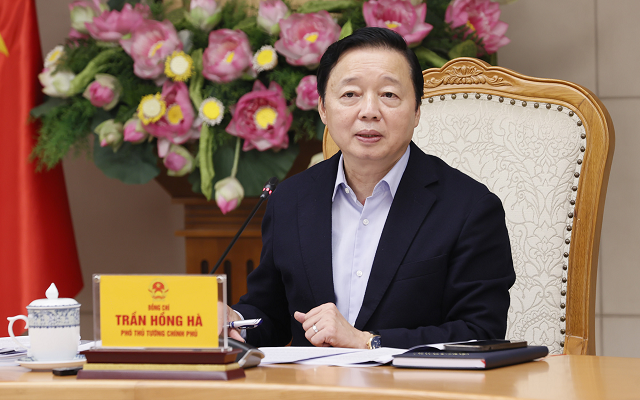
Deputy Prime Minister Tran Hong Ha highly appreciates the positive and proactive spirit of the Ministry of Transport in building and adjusting the overall plan for the seaport system – Photo: VGP / MK
|
The project will adjust some content regarding objectives, port groups, land and water use requirements; investment capital requirements; priority projects; implementation solutions (mechanisms, policies, environment, science and technology); assignment in organizing implementation work.
Accordingly, by 2030, the seaport system will meet the cargo volume of 1,330 to 1,612 million tons (an increase of about 190 million tons), and passenger volume of 17.4 to 18.8 million trips (an increase of 7.3-8.5 million trips). The estimated international transshipment container cargo volume is about 4.1 million TEUs.
By 2050, the capacity of the seaport system will meet the cargo demand with an average annual growth rate of 4.2 to 4.8% (an increase of 0.2-0.3%).
In addition to prioritizing the development of international gateway port areas such as Lach Huyen (Hai Phong), Cai Mep (Ba Ria – Vung Tau); planning to build the international transshipment port of Can Gio; upgrading the potential of Ho Chi Minh City seaport from a type 1 port to a special seaport; supplementing international transshipment cargo demand through Lien Chieu port (Da Nang) with about 0.5-1 million TEUs per year by 2030.
The investment capital requirement for the seaport system by 2030 is about 351,500 billion VND, an increase of 38,500 billion VND; prioritizing additional public infrastructure projects for offshore Tran De port and the international transshipment port of Can Gio.
In terms of implementation solutions, the project proposes to “review, amend and issue legal normative documents, establish and issue mechanisms to encourage investment by organizations and individuals participating in investment, development and exploitation of ports according to the model of environmentally friendly ports, smart ports, using clean, green, low-emission or greenhouse gas-free fuels, and being friendly to the environment in port operation and business activities.”
At the meeting, the leaders of the Ministry of Planning and Investment, Ministry of Transport, Ministry of National Defense, Ho Chi Minh City People’s Committee, and Ba Ria – Vung Tau province discussed and analyzed the legal basis, procedural sequence, scientific basis, practice, and forecasted cargo and passenger volumes, impact assessment of the key contents in the overall plan for the development of the Vietnamese seaport system in the period 2021-2030 and the vision to 2050.
The opinions emphasized that the adjusted plan must enhance the comprehensive connection of transportation infrastructure, transportation methods, logistics services, etc., in order to avoid scattered, ineffective, and wasteful investment, and to reduce Vietnam’s seaport competitiveness; clarify the rationale for adding the Can Gio international transshipment port, the relationship between Ho Chi Minh City seaport and Ba Ria – Vung Tau seaport; improve the international transshipment capacity of Lien Chieu port; propose measures to minimize the impact of the seaport system on the environment and ecosystem; evaluate and forecast the maritime services market and Vietnam’s seaports compared to other countries in the region and the world…

Deputy Prime Minister Tran Hong Ha: Investment in seaports in the future must adhere to the criteria of green, green energy, digital infrastructure… for the benefit of port groups, as well as the benefit of the region and the country – Photo: VGP / MK
|
Deputy Prime Minister praised the positive and proactive spirit of the Ministry of Transport in building and adjusting the overall plan for the seaport system; at the same time, having a method, scientific classification criteria, close adherence to viewpoints, objectives, and forecasts of development needs in each economic-social region and each locality.
Agreeing with the suggestions related to adding the Can Gio international transshipment port; increasing the international transshipment cargo volume through Lien Chieu port (Da Nang) to about 0.5-1 million TEUs by 2030, the Deputy Prime Minister requested the Ministry of Transport to calculate and clarify the economic, technical, environmental evidence… for the adjustment of international transshipment ports in relation, sharing benefits with existing international gateways, transshipment ports, as well as other port groups and the system of connecting transportation, and supporting post services infrastructure, and technology.



